Air Force is a 1943 American World War II aviation film from Warner Bros., produced by Hal B. Wallis and Jack L. Warner, directed by Howard Hawks, starring John Garfield, John Ridgely, Gig Young, Arthur Kennedy, and Harry Carey. Made in the aftermath of the Pearl Harbor attack, it was one of the first of the patriotic films of the war, often characterized as a propaganda film.
| Air Force | |
|---|---|
Theatrical release half-sheet display poster | |
| Directed by | Howard Hawks |
| Produced by | Hal B. Wallis Jack L. Warner (executive producer) |
| Written by | Dudley Nichols |
| Starring | John Garfield John Ridgely Gig Young Arthur Kennedy Harry Carey |
| Music by | Leo F. Forbstein |
| Cinematography | James Wong Howe Elmer Dyer Charles A. Marshall |
| Edited by | George Amy |
| Distributed by | Warner Bros. |
Release date |
|
Running time | 124 minutes |
| Country | United States |
| Language | English |
| Budget | $3,000,000 (1942) |
| Box office | $2.7 million (US rentals) |
The story revolves around an actual incident that occurred on December 7, 1941. An aircrew is ferrying an unarmed Boeing B-17 Flying Fortress heavy bomber named the Mary-Ann across the Pacific to the United States Army Air Corps base at Hickam Field when they fly right into the middle of the Japanese air attack on Pearl Harbor and the beginning of America's direct involvement in World War II. An uncredited William Faulkner wrote the emotional deathbed scene for Ridgely, who played the pilot of the Mary-Ann.
Screenplay
On December 6, 1941, at Hamilton Field, near San Francisco, a United States Army Air Corps B-17D bomber named the Mary-Ann and its crew are being readied for a flight across the Pacific.
Master Sergeant Robbie White (Harry Carey), the Mary-Ann's crew chief, is a long-time veteran in the Army Air Corps, whose son, Danny White is a West Point graduate, an officer, and a pilot. The navigator, Lt. Monk Hauser Jr. (Charles Drake), is the son of a World War I hero of the Lafayette Escadrille. The pilot is Michael Aloysius "Irish" Quincannon Sr. (John Ridgely), the co-pilot is Bill Williams (Gig Young) and the bombardier, Tom McMartin (Arthur Kennedy). Sergeant Joe Winocki (John Garfield) is a disgruntled gunner who, as an aviation cadet in 1938, washed out of flight school after he was involved in a mid-air collision in which another cadet was killed. Quincannon was the flight instructor who requested that the board of inquiry dismiss Winocki. The navigator and bombardier also washed out of pilot training.
With the United States at peace, the Mary-Ann and the rest of its squadron are ordered to fly without ammunition to Hickam Field at Pearl Harbor, Territory of Hawaii. As it happens, the Mary-Ann flies right into the Japanese sneak attack on Pearl Harbor on December 7, 1941. In its aftermath, the beleaguered B-17 crew is taxed to the limit, as they are ordered on, with little rest, first to Wake Island, and then on to Clark Field in the Philippines, both locations also coming under heavy Japanese attack. While en route, the crew listens to President Franklin D. Roosevelt ask Congress for a declaration of war. They take along two passengers to Clark Field: fighter pilot Lt. Thomas "Tex" Rader (James Brown) and a small dog, "Tripoli", the Marines' mascot on Wake Island.
When they land at Clark Field, White learns that his son was killed on the first day trying to lead his squadron into the air. Soon after, Quincannon volunteers his bomber for a one-aircraft mission against a Japanese invasion fleet, but the Mary-Ann is attacked by enemy fighters and forced to abort. The badly wounded Quincannon orders his men to bail out, then blacks out. Seeing this, Winocki remains aboard and the crippled Mary-Ann makes a successful belly landing, being unable to lower the landing gear.
Having told a dying Quincannon that the Mary-Ann is ready to fly, the crew works feverishly through the night to repair their bomber using parts salvaged from other, damaged B-17s, as the Japanese Army closes in. Private Chester volunteers to fly as gunner in a two-seat fighter aircraft defending Clark Field. In aerial combat, the pilot is killed, so Chester bails out; he is shot repeatedly and killed by a Japanese fighter pilot while descending helpless in his parachute. Winocki and White shoot down the fighter. When the armed Japanese pilot stumbles from the burning wreckage, a furious Winocki machine-guns him repeatedly. The exhausted aircrew barely manages to finish their repairs as the airfield comes under heavy ground attack. With help from the Marines and Army soldiers, the Mary-Ann, now returning fire, roars down the runway and flies again.
As their B-17 heads for Australia, with Rader as the reluctant pilot and the wounded Williams as co-pilot, they spot a large Japanese naval invasion task force below. The crew radios the enemy's position and circles until reinforcements arrive; the Mary-Ann then leads the bombing attack that destroys the Japanese fleet (the missions portrayed in these Coral Sea sequences mirror real-life events).
In the final scene, a bombing attack on Tokyo is finally announced to a roomful of bomber crews, among them several familiar faces from the Mary-Ann, including Rader, now a B-17 pilot. As their bombers take off, President Roosevelt's words are heard in a stirring voice-over, while the assembled air armada heads towards the rising sun and victory.
As appearing in screen credits (main roles identified):
| Actor | Role |
|---|---|
| John Ridgely | Captain Michael Aloysius "Irish" Quincannon, Sr., Pilot |
| Gig Young | Lt. William Williams, Co-Pilot |
| Arthur Kennedy | Lt. Thomas C. McMartin, Bombardier |
| Charles Drake | Lt. Monk Hauser, Jr., Navigator |
| Harry Carey | Master Sergeant Robert "Robbie" White, Flight Engineer & Crew Chief |
| George Tobias | Corporal Weinberg, Assistant Crew Chief |
| Ward Wood | Corporal "Minnesota" Peterson, Radio Operator |
| Ray Montgomery | Private Chester, Assistant Radio Operator |
| John Garfield | Sergeant Joe Winocki, Aerial Gunner |
| James Brown | Lt. Thomas "Tex" Rader, Pursuit Pilot – (Passenger) |
| Stanley Ridges | Major Mallory – Clark Field |
| Willard Robertson | Colonel at Hickam Field |
| Moroni Olsen | Colonel Blake – Commanding Officer at Manila |
| Edward Brophy (as Edward S. Brody) | Sergeant J.J. Callahan, USMC |
| Richard Lane | Major W.G. Roberts |
| Bill Crago | Pilot P.T. Moran at Manila |
| Faye Emerson | Susan McMartin – Tommy's Sister |
| Addison Richards | Major Daniels |
| James Flavin | Major A.M. Bagley |
| Dorothy Peterson | Mrs. Chester – uncredited |
| Leah Baird | Nurse #2 – uncredited |
| Ann Doran | Mrs. Mary Quincannon – uncredited |
| Ruth Ford | Nurse – uncredited |
Director Howard Hawks credited the concept of the film to Lt. Gen. Henry H. Arnold, Commanding General of the Army Air Forces, based on the experiences of a flight of B-17s that left Hamilton Field, California, on the night of December 6, 1941, and literally flew into the war the next morning at Pearl Harbor. Executive producer Jack Warner was adamant that the film be ready for release by December 7, 1942, the first anniversary of the attack on Pearl Harbor. To that end, miniatures for battle sequences were filmed in May and June 1942, before completion of the script and storyline.
Although pre-production work on Air Force had already taken place, the official start of the production on May 18, 1942, was tied to the War Department approving the script. Development of the film was concurrent with script-writing by Dudley Nichols, with some characters based on Air Corps personnel Hawks met while traveling to Washington, D.C., to confer with Arnold and the War Department Motion Picture Board of Review. Nichols's script, submitted June 15, was 207 pages in length (twice that of the normal feature-length film), had its initial 55 pages devoted to "character development," and was not finished.
Principal photography for Air Force, consisting of aerial shots and exteriors, took place at Hendricks Army Airfield, Florida. For water scenes and shooting miniatures shots, MacDill Field, Florida, Randolph Field, Texas, and Santa Monica Bay, California, were used. Shooting began June 18, 1942, using a rented mock-up of a B-17 interior, in which the 10 principal characters performed for a month. The company then moved by train to Drew Army Air Field, Florida, at the end of July, to spend the next month shooting aerial sequences coordinated by Paul Mantz, chief pilot and aerial technical coordinator for the production. Drew was selected because of fears that use of aircraft marked as Japanese might cause panic on the West Coast.
At the end of August, Hawks returned to Hollywood and engaged William Faulkner to rewrite two scenes for Air Force, including the death of the Mary-Ann's pilot. By then, the film, scheduled to be completed by September 17, was three weeks behind schedule and only half completed. Production featured a celebrated clash between producer Hall Wallis and Hawks over the latter's constant changing of dialogue as scenes were shot. Hawks was briefly replaced on October 4 by Vincent Sherman, but returned from "illness" on October 10 to take back primary direction. Sherman remained as second unit director to assist with completion of the picture, which wrapped on October 26, 1942, failing to shoot 43 pages of script and 33 days over schedule, too late to meet its December 7 release date.
Wallis wrote that AAF Captains Sam P. Triffy and Hewett T. Wheless were technical advisors to the film, and that Triffy in particular made significant contributions to the storyline, dialogue, and sets. "Shorty" Wheless had previously been a B-17 aircraft commander in the Philippines with the 19th Bomb Group and had been one of the survivors evacuated to Australia in December 1941. He was at Randolph Field, Texas, in the process of appearing as himself in the Academy Award-winning short film Beyond the Line of Duty when he assisted on Air Force.
Aircraft
The U. S. Army Air Forces provided the various aircraft that appear in the film:
- Ten Boeing B-17B/C/D Flying Fortresses were from Hendricks Army Airfield at Sebring, Florida. The majority were B-17Bs upgraded to B-17C/D standards, as was the B-17 that portrayed Mary-Ann. The bomber's on-screen, "wartime security" serial number 5564 (actually "40-5564") is listed in the film credits, but the bomber's actual serial number was 8584 ("38-8584"), being so marked on the left side of the vertical tail. The 05564 serial number actually belonged to a North American AT-6 Texan trainer. In the film's beginning stock footage flight ?ine scene, an early model YB-17 can be seen in the background of the bomber lineup on the flight line.
- North American AT-6 Texans and Republic P-43 Lancers were painted as Japanese fighters.
- Bell P-39 Airacobras and Curtiss P-40C Warhawks were the AAF fighters; they were from Drew Army Airfield, Florida.
- Six Martin B-26C Marauders were painted as Japanese bombers; they were from MacDill Field.
The real Mary-Ann was reported lost in the Pacific shortly after the film production wrapped, according to information attributed to the production's technical advisor; actually, no early Flying Fortresses served for long in Pacific combat after Pearl Harbor. Another claim, attributed to a newspaper article, was that "the real Mary-Ann "went on tour to promote the film, then was assigned to Hobbs Army Air Field, New Mexico, then later to Amarillo Army Air Field, where it was assigned to a ground school. Two early B-17B aircraft, upgraded to the later model "D" standards, played the role of Mary Ann; AAF serial numbers 38-584 and 39-10 (briefly seen in background projection as John Garfield boards the aircraft) were reclassified in late 1943 as instructional airframes; following the war, both were scrapped in January 1946.
The basic premise of Air Force, that a flight of B-17s flying to reinforce the defense of the Philippines flies into the attack on Pearl Harbor, reflects actual events. From that point on, however, all of the incidents are fictitious. No B-17 reinforcements reached the Philippines; the survivors of those already based there retreated to Australia less than two weeks after the war began. The major bombing mission depicted at the film's climax most closely resembles the Battle of the Coral Sea five months later. Miniature shooting for its batt
Watch movie Air Force Film online on Amazon
Watch movie Air Force Film online
Watch The Movie On PrimeMajboor Full HD Movie Download
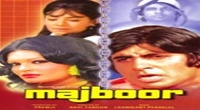
Milana Full HD Movie Download

Gentleman Full HD Movie Download

No One Killed Jessica Full HD Movie Download

Chhoti Behen Full HD Movie Download

Rajaji Full HD Movie Download

Oye Lucky! Lucky Oye! Full HD Movie Download

Pyar Ke Rahi Full HD Movie Download

Guzaarish Full HD Movie Download

Lakhon Mein Ek (1971) Full HD Movie Download
.jpg)
Elaan (1971) Full HD Movie Download
.jpg)
Haunted Full HD Movie Download
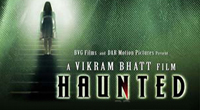
Adavilo Abhimanyudu Full HD Movie Download
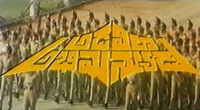
Bhagvat Geeta Full HD Movie Download
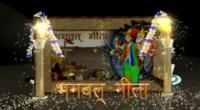
Jagan Mohini Full HD Movie Download

Wild Wild West Full HD Movie Download
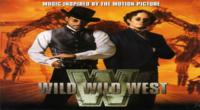
Bharath Bandh Full HD Movie Download
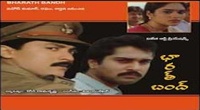
Manavaraali Pelli Full HD Movie Download
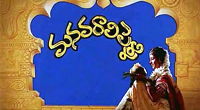
Alludu Kosam Full HD Movie Download

Takkari Donga Chakkani Chukka Full HD Movie Download

Needa The Shadow Full HD Movie Download
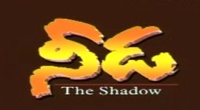
Download latest Movie from bollywood
- 1> baaghi 3
- 2> THE SKY IS PINK MOVIE FULL STORY AND REVIEW
- 3> Luka Chuppi
- 4> TO ALL THE BOYS I’VE LOVED BEFORE
- 5> Kabir Singh
- 6> Street Dancer 3D
- 7> Simmba
- 8> Gone Girl
- 9> The Girl Who Lived
- 10> Ludo
- 11> DILWALE DULHANIA LE JAYENGE
- 12> GUILTY
- 13> The Godfather
- 14> Adventures of Rusty
- 15> Sooryavanshi
- 16> Satyameva Jayate 2
- 17> Thappad
- 18> Bhool Bhulaiyaa 2
- 19> KGFChapter 2
- 20> Mardaani 2
- 21> Pinjar
- 22> Shivaji maharaj
- 23> Ek Villian 2
- 24> Hungama 2
- 25> Divergent
- 26> Mumbai Saga
- 27> The Internship
- 28> HIT (telugu)
- 29> Panga
- 30> The perfect date
- 31> 16 December
- 32> Gopala Gopala (Telugu)
- 33> Brahmastra
- 34> Gangubai Kathiawadi
- 35> Manmadhudu
- 36> Nenu local
- 37> Mahanati
- 38> Shatamanam bavathi
- 39> Lagaan
- 40> After
- 41> MOM
- 42> Shamshera
- 43> Raguvaran BTech
- 44> Khakee
- 45> The villain
- 46> OM
- 47> Mr. perfect
- 48> Bueatifull mind
- 49> Hichki
- 50> Gabbar Singh
- 51> Jogi
- 52> Before Sunrise
- 53> Before Sunset
- 54> Before Midnight
- 55> The Big Bull
- 56> Top Gun: Maverick
- 57> The Purge
- 58> The Sky is Pink
- 59> Laxmmi Bomb
- 60> Sadak 2
- 61> Sufna
- 62> Prithviraj
- 63> PK
- 64> Coolie No 1(2020)
- 65> Black Widow
- 66> Dear Zindagi
- 67> Dil Bechara
- 68> PHIR HERA PHERI
- 69> WAR
- 70> Dostana
- 71> RRR: Roudram Ranam Rudhiram
- 72> Maidan
- 73> Dabbang 3
- 74> Chhalaang
- 75> life as we know it
- 76> SherShaah
- 77> Sandeep Aur Pinky Faraar
- 78> Event Horizon
- 79> 83
- 80> Radhe: Your Most Wanted Bhai
- 81> Gunjan Saxena: The Kargil Girl
- 82> Mr India
- 83> Vivah
- 84> Anokha Bandhan
- 85> Ghost
- 86> Bhoot: Part One - The Haunted Ship
- 87> Haseen Dilruba
- 88> Laal Singh Chaddha
- 89> Qismat
- 90> Rajput
- 91> Drive
- 92> Dil Chahta Hai
- 93> Dil Ki Baazi
- 94> Dil Ka Rishta
- 95> Teesri Manzil
- 96> Dil
- 97> Love Aaj Kal
- 98> Khaali Peeli
- 99> Bunty Aur Babli 2
- 100> Atrangi Re
- 101> Gulabo Sitabo
- 102> Jodi
- 103> Suraj Pe Mangal Bhari
- 104> Deewana
- 105> Attack
- 106> Sardar Udham Singh
- 107> Toofan
- 108> THE LOVEBIRDS
- 109> Jersey
- 110> Ginny Weds Sunny
- 111> Thalaivi
- 112> Shiddat
- 113> Angels vs Zombies
- 114> Koi Mil Gya
- 115> Thank God
- 116> Bhuj: The Pride of India
- 117> Hum Aapke Hain Kaun
- 118> The Platform
- 119> Bird Box
- 120> Roohi Afzana
- 121> Torbaaz
- 122> Nikamma
- 123> World War Z
- 124> Extraction
- 125> Train to Busan
- 126> Life of Pi
- 127> SHAADI MEIN JROOR AANA
- 128> Himmat Aur Mehnat
- 129> To All The Boys: P.S. I Still Love You
- 130> Mimi
- 131> Good Newwz
- 132> Shubh Mangal Zyada Saavdhan
- 133> Raabta
- 134> Harry Potter and the Philosopher's Stone
- 135> Harry Potter and the Chamber of Secrets
- 136> Chhapaak
- 137> War of the Worlds
- 138> Harry Potter and the Prisoner of Azkaban
- 139> Harry Potter and the Goblet of Fire
- 140> MURDER MYSTERY
- 141> Shakuntala Devi
- 142> Bachchan Pandey
- 143> Jayeshbhai Jordar
- 144> Sheer Qorma
- 145> Saina
- 146> 'O' Pushpa I hate tears
- 147> Kedarnath
- 148> MS Dhoni The Untold Story
- 149> Chhichhore
- 150> Badhaai Ho
- 151> Unstoppable
- 152> Oz the Great And Powerful
- 153> The Girl on the Train
- 154> Haathi Mere Saathi 2020
- 155> The Conjuring: The Devil Made Me Do It
- 156> Gandhi Se Pehle Gandhi
- 157> The Song of Scorpions
- 158> Srimanthudu
- 159> Hello Guru Prema Kosame
- 160> Beauty and The Beast
- 161> Black Panther
- 162> Charlie and the Chocolate Factory
- 163> Bole Chudiyan
- 164> Fidaa
- 165> Duvvada Jagannadham
- 166> Bruce Lee: The Fighter
- 167> Hyper
- 168> Yaara
- 169> Red (2020)
- 170> Shivam
- 171> That Is Mahalakshmi
- 172> Nishabdham
- 173> Aashram 2020 web series
- 174> Laxmii
- 175> Mismatched
- 176> STUDENT OF THE YEAR 2
- 177> NAIL POLISH
- 178> Ramprasad Ki Tehrvi
- 179> KAAGAZ
- 180> 12 o Clock
- 181> The Power
- 182> bolo hau
- 183> Tribhanga
- 184> JAMUN
- 185> Madam Chief Minister
- 186> Maasaab
- 187> Aadhaar
- 188> Tanhaji
- 189> Bhaagi 3
- 190> Bhootnath
- 191> MALANG
- 192> Jai Mummy Di
- 193> Haathi Mere Saathi 2021
- 194> Shakeela
- 195> Unpaused
- 196> Annayya
- 197> Vamsoddharakudu
- 198> Mrugaraju
- 199> Narasimha Naidu
- 200> Sankranti
- 201> Manasu Maata Vinadhu
- 202> Anjaane
- 203> Apaharan
- 204> Bachke Rehna Re Baba
- 205> Bewafaa
- 206> Roohi
- 207> Radhe
- 208> Zindagi Khoobsoorat Hai
- 209> Yeh Mohabbat Hai
- 210> Yeh Kya Ho Raha Hai?
- 211> The Tomorrow War
- 212> DehradunDiary
- 213> Meri Shaadi Karaoo
- 214> Matruu Ki Bijlee Ka Mandola
- 215> No One Killed Jesica
- 216> Aag Ka Goola
- 217> Eight Million Dollars
- 218> Three Hundred
- 219> Cats and Dog
- 220> Decoy
- 221> Gold Rush
- 222> You Have Got Mail
- 223> Final Destination three
- 224> Tofan
- 225> Jungle
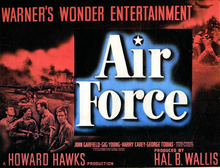 Story of movie Air Force Film :
Story of movie Air Force Film : 